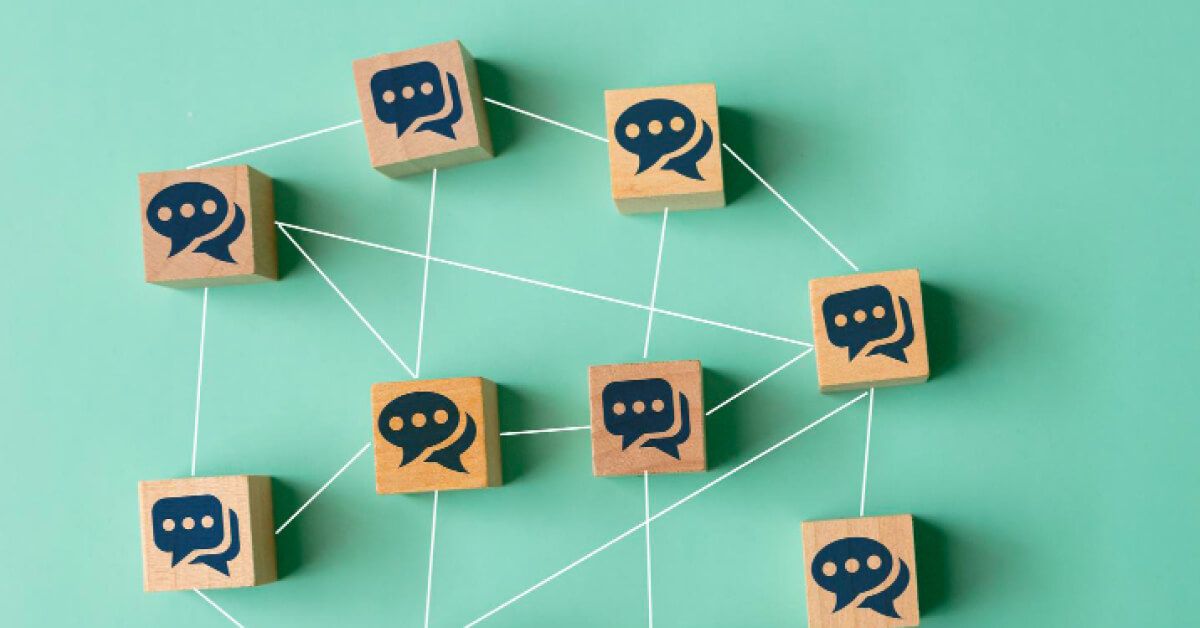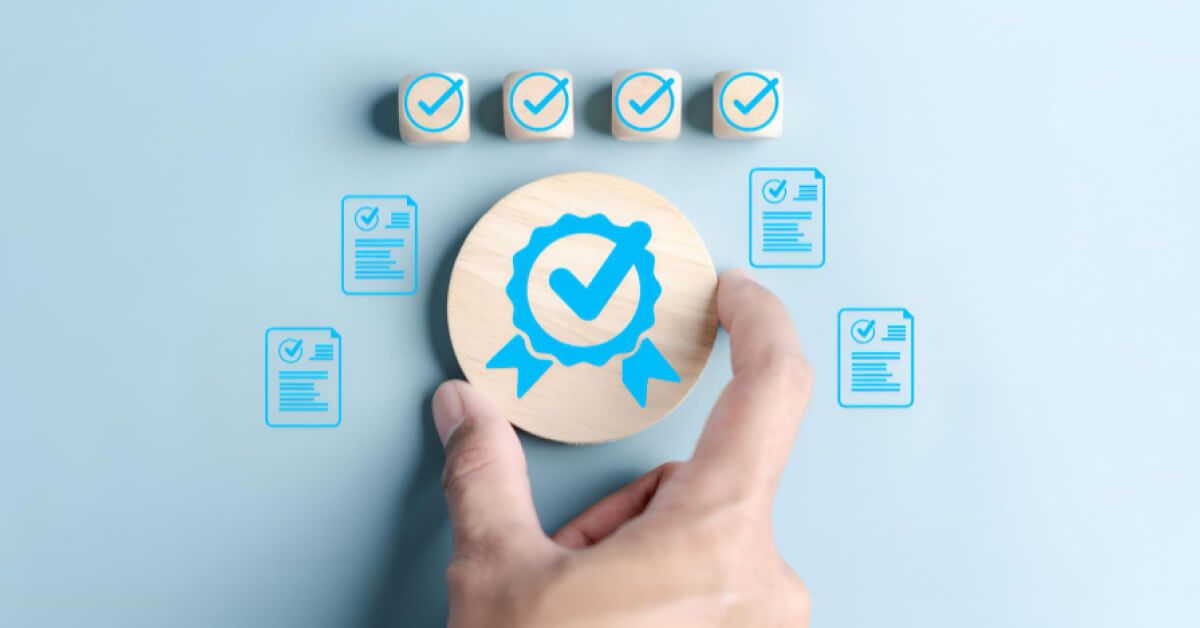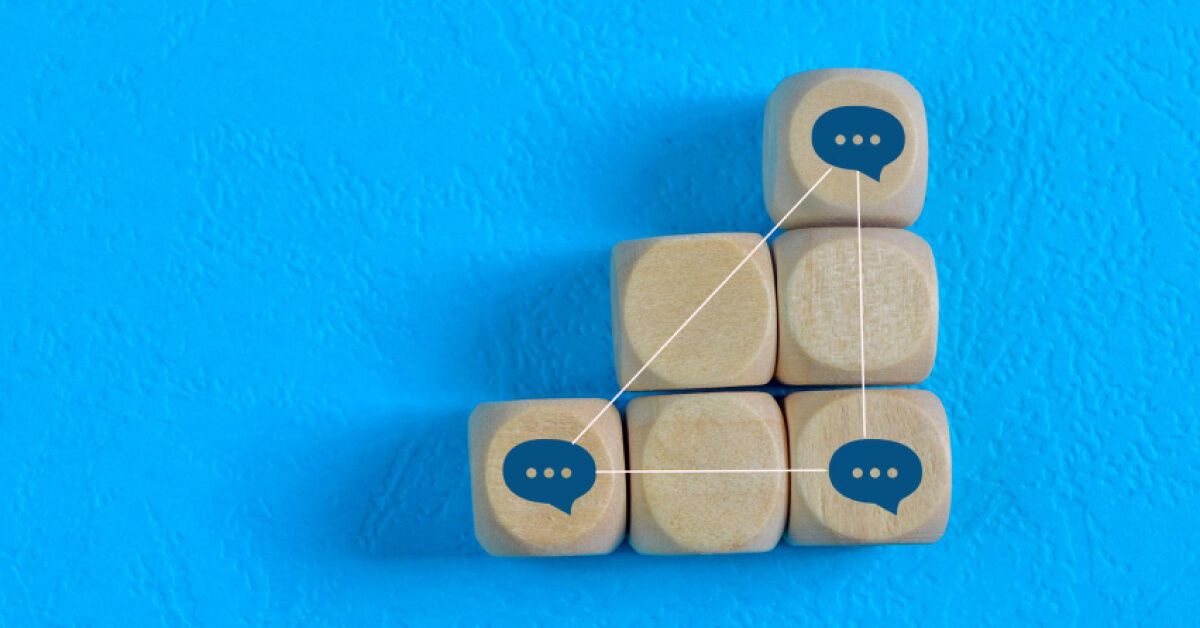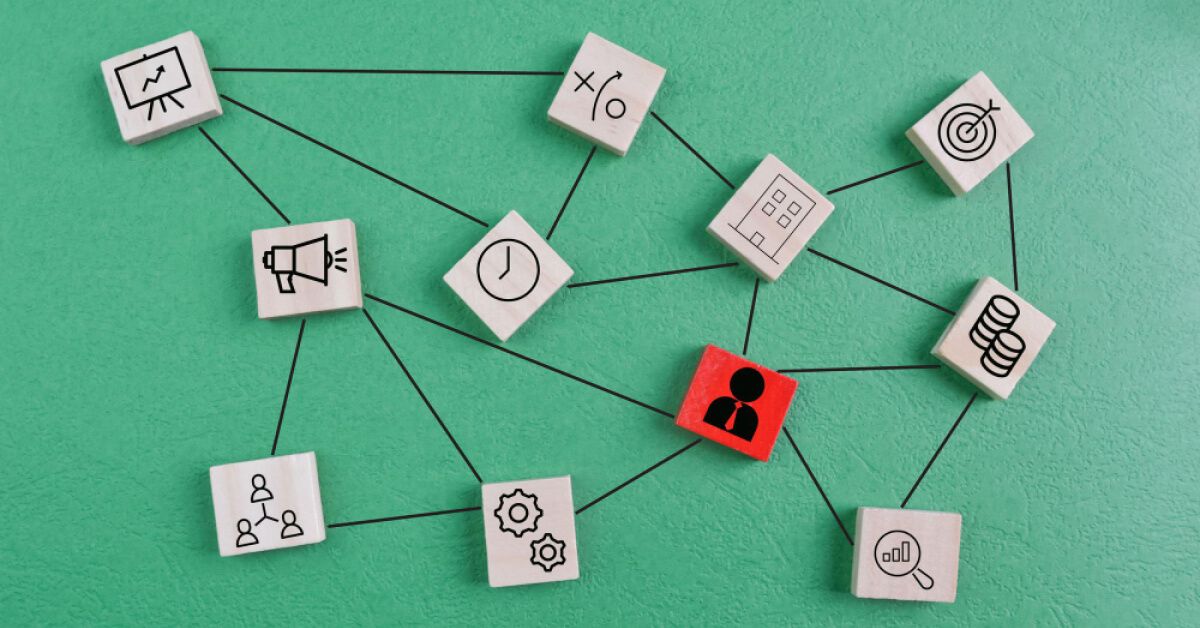Employee engagement survey communication sample: How to effectively engage your workforce in 2025

Imagine planning the party of the year—complete with great food, entertainment, and all the right vibes—but forgetting to include key details in the invitation. No time, no location, no dress code. What happens next? Most of your guests either ignore the invite or show up confused and unprepared.
Now, imagine swapping that party for an employee engagement survey. Without proper communication, the same chaos ensues—employees may overlook the survey entirely, question its purpose, or doubt whether their feedback will even matter.
Think about it: when a survey is rolled out without context, clarity, or encouragement, it’s like sending a half-written invitation. Employees don’t feel motivated to participate, they’re unsure if their responses are anonymous, and they may even assume the whole process is just a checkbox exercise for management.
That’s why survey communication isn’t just a step—it’s the foundation for engagement. In this blog, we’ll break down how to craft the perfect “invitation” to get employees excited, involved, and ready to share their insights.
What is an employee engagement survey communication?

An employee engagement workplace communication survey is the process of informing and engaging employees about an upcoming survey designed to assess their workplace experiences, job satisfaction, and overall engagement. It involves sharing clear, concise, and motivating messages that explain the survey's purpose, how their feedback will be used, and why their participation is vital.
A well-structured communication plan ensures employees feel valued and reassured about the survey’s confidentiality. This communication is more than a simple announcement—it’s a strategy to encourage participation and trust. It typically includes multiple touchpoints, such as emails, intranet posts, and team meetings, to reach employees where they are.
Transparency is crucial; employees need to know what’s expected of them, how their input will influence decisions, and when they can expect follow-up actions based on the survey results.
Effective employee engagement communication surveys also address potential concerns, like anonymity, to alleviate hesitation. For example, leaders might emphasize how responses are aggregated and analyzed collectively to ensure individual privacy.
By setting the right tone and being consistent in messaging, communication builds trust and fosters a culture where employees feel comfortable sharing honest feedback.
Why effective communication is crucial for employee engagement surveys?

Employee engagement surveys can only deliver meaningful insights if employees actively participate and provide honest feedback. Effective communication serves as the bridge between the survey’s intention and its success.
It ensures employees understand the survey’s purpose, trust the process, and feel motivated to share their thoughts openly. Without it, even the best-designed internal surveys will fall flat.
- Builds trust and transparency: Clear communication assures employees that their input matters and will be used to drive meaningful change. When employees trust the process and understand the purpose, they are more likely to provide honest and thoughtful responses.
- Encourages higher participation rates: When employees are well-informed about the survey, including its goals and the confidentiality of their responses, they feel more inclined to participate. A well-communicated survey announcement can significantly boost engagement rates.
- Addresses concerns about anonymity: Many employees hesitate to share feedback due to fear of repercussions. Effective communication emphasizes anonymity, explaining how individual responses are protected, building confidence in the process.
- Aligns employee expectations: It sets clear expectations about survey timelines, topics, and follow-up actions. Employees are more likely to engage when they know what’s happening and when to expect results.
- Promotes honest feedback: Employees are more likely to share genuine insights when they feel confident about the survey’s intent and trust leadership’s commitment to act on the results.
- Highlights leadership’s commitment to improvement: By clearly explaining the survey’s purpose, leaders demonstrate they value employees’ opinions and are invested in creating a better workplace environment.
- Fosters a culture of openness: Ongoing communication normalizes feedback and collaboration, encouraging employees to view surveys as a regular opportunity to voice their opinions and contribute to positive change.
Key elements of a successful employee engagement survey communication

A well-structured employee engagement survey communication ensures employees feel informed, valued, and motivated to participate. The key is to address their concerns, foster trust, and create excitement about the survey. These elements work together to drive engagement and make the employee sentiment survey process seamless and impactful.
Clarity in purpose
Clearly communicate why the survey is being conducted and how it aligns with the organization’s goals. Highlight the benefits of participation, both for employees and the workplace as a whole. Employees are more likely to engage when they understand how their feedback drives positive changes. This clarity builds trust and sets the stage for honest responses.
Assurance of anonymity
Address concerns about privacy by emphasizing that responses are anonymous and that responses remain confidential. Explain how data will be handled, analyzed, and shared only in aggregate formats. Reassurance about anonymity encourages employees to provide candid feedback. Trust in the process is essential for gathering meaningful and actionable insights.
Personalized messaging
Tailor your communication to reflect your organization’s tone and values, ensuring it feels authentic. Use relatable language and examples that resonate with employees across different roles and levels. Personalization fosters a sense of connection and relevance, increasing engagement with the survey. Avoid generic messaging that feels detached or impersonal.
Multiple channels of communication
Utilize various communication platforms, such as email, intranet posts, team meetings, and instant messaging apps like Slack or Teams. This ensures that all employees, including remote or deskless workers, receive the survey information. A multi-channel approach increases accessibility and reinforces the importance of the survey.
Clear timelines
Provide a detailed timeline, including when the survey will launch, the deadline for completion, and when results will be shared. Timelines create a sense of urgency while keeping employees informed. Clear deadlines also provide valuable insights to help employees plan their participation, reducing the likelihood of missed opportunities.
Leadership endorsement
Include messages or videos from senior leaders to emphasize the survey’s importance and its role in shaping organizational decisions. Leadership involvement adds credibility and demonstrates a commitment to improvement. When employees see leaders championing the survey, they are more likely to participate with genuine interest.
Commitment to action
Reinforce that the survey isn’t just for show by outlining how the feedback will lead to real change. Share examples of previous surveys that resulted in workplace improvements to build confidence. Employees are more likely to participate when they believe their input will translate into meaningful action.
How to create an effective employee engagement survey communication plan?

By organizing every step strategically, you can maximize participation and collect meaningful feedback. Here’s how to create a full employee survey communication plan that works seamlessly:
- Define the objectives: Start by clarifying the purpose of the survey and what you aim to achieve with the results. Whether it’s improving workplace culture or addressing specific concerns, aligning goals with communication is essential. This sets the tone for all survey-related messaging.
- Identify the target audience: Understand the diverse roles, locations, and communication preferences of your workforce. Tailor your plan to address the unique needs of all employee segments. A one-size-fits-all approach may miss key participants, so personalization is key.
- Develop a messaging strategy: Craft messages that emphasize the survey’s importance, purpose, and confidentiality. Use clear, concise, and relatable language that resonates with employees. Make the message engaging and positive to build excitement about participation.
- Choose the right communication channels: Decide which platforms—email, intranet, Slack/Teams, or team meetings—will best reach your workforce. Use multiple channels to ensure no employee misses the information. Consider how remote or deskless employees can access the survey details.
- Set a clear timeline: Map out key dates for survey launch, reminders, and follow-up actions. Sharing this timeline with employees keeps them informed and reduces confusion. Consistent updates ensure everyone knows when and how to engage with the survey.
- Engage leadership for support: Involve leaders and managers in promoting the survey and addressing employee concerns. Messages from trusted leadership show the survey is valued and credible. Leadership advocacy motivates employees to participate with confidence.
- Plan for post-survey communication: Outline how you will share the results and action plans after the survey concludes. Transparency and follow-up are critical to maintaining trust and demonstrating commitment. This ensures employees see the impact of their feedback and remain engaged.
10 Best practices for communicating employee engagement surveys to your workforce

Here are 10 best practices to make your communication strategy impactful:
- Start with leadership support: Have leaders introduce the survey through emails, videos, or team meetings. Their involvement reinforces the importance of the survey and builds trust among employees.
- Explain the purpose clearly: Communicate why the survey is being conducted and how it benefits both employees and the organization. Clarity about the purpose ensures employees see value in participating.
- Reassure anonymity and confidentiality: Emphasize that all responses will remain anonymous and used only in the aggregate. Addressing privacy concerns upfront encourages employees to provide honest feedback.
- Use simple and inclusive language: Write survey announcements in clear, jargon-free language that resonates with all employees. Inclusive language ensures that every team member feels addressed.
- Leverage multiple communication channels: Use email, intranet, Slack/Teams, and team meetings to share survey details. Reaching employees through multiple platforms ensures no one is left out.
- Send timely reminders: Schedule periodic reminders before the survey closes. These reminders keep participation top of mind without overwhelming employees.
- Add a personal touch: Include a manager or team-specific message to make communication feel more relevant. Personalized outreach can improve engagement and response rates.
- Make it easy to participate: Provide direct links to the survey and clear instructions for completion. A seamless process reduces barriers to participation.
- Focus on two-way communication: Allow employees to ask questions about the survey or its process. This openness fosters trust and transparency, encouraging higher participation.
- Commit to sharing results and actions: Clearly communicate when and how employee engagement survey results will be shared. Highlight your commitment to acting on the feedback to show employees their input matters.
Example templates for employee engagement survey announcements

Here are sample templates for different types of communication channels to announce your next employee satisfaction and engagement survey. Each template is designed to encourage participation while addressing employees' concerns and emphasizing the importance of the survey.
Email sample
Subject: Your Voice Matters – Take Our Employee Engagement Survey!
Dear [Employee Name],
We’re excited to announce the launch of our Employee Engagement Survey, and we want to hear from you! This is your opportunity to share your thoughts, ideas, and experiences to help shape our workplace.
The survey is [confidential/anonymous] and will take approximately [X minutes] to complete. Your honest feedback is invaluable in helping us create a better environment for everyone.
Survey Details:
- Launch Date: [Insert Date]
- Closing Date: [Insert Date]
- Survey Link: [Insert Link]
Your voice matters, and we’re committed to acting on your feedback. Don’t miss the chance to make an impact.
Thank you for being a vital part of our journey!
Best regards,
[Your Name/Leadership Team
Intranet announcement sample
Headline: Your Feedback Can Shape the Future – Take Our Engagement Survey!
Body:
We’re thrilled to invite you to participate in our Employee Engagement Survey! Your opinions and ideas are essential to building a better workplace for everyone.
The survey is quick, confidential, and easy to complete. It will remain open from [Insert Date] to [Insert Date]. Simply click [Insert Link] to share your thoughts today!
Your feedback will help us identify areas for growth and improvement. Together, we can create an environment where everyone thrives. Let’s work together to make a difference!
[CTA Button: “Take the Survey”]
Slack/Teams message sample
Hey Team! 👋
We need YOUR input to make our workplace even better! 🚀 Our Employee Engagement Survey is now live, and we’d love to hear your thoughts. The survey is anonymous and only takes [X minutes].
👉 [Insert Survey Link]
Your feedback helps us understand what’s working and what can improve. The survey is open from [Insert Date] to [Insert Date]. Let’s work together to create a space where everyone thrives!
Thanks for taking the time to share your perspective! 🙌
How to communicate employee engagement surveys?

A well-planned communication strategy can significantly boost participation rates and the quality of responses. Here’s a step-by-step approach to successfully communicate your employee engagement survey:
- Emphasize confidentiality: Reassure employees that their responses are anonymous or confidential. Transparency about how data will be collected, used, and reported is crucial to gaining trust.
- Choose appropriate channels: Leverage diverse communication channels like email, intranet, Slack/Teams, and team meetings to ensure everyone receives the message. Multiple touchpoints ensure no employee is left uninformed.
- Involve leadership: Ask leaders or managers to promote the survey through personal messages or team announcements. Leadership endorsement boosts credibility and encourages participation.
- Make it easy to access: Provide direct survey links and clear instructions in your communications. Eliminate any barriers to participation by simplifying the process.
- Send regular reminders: Throughout the survey period, send friendly reminders to employees who haven’t completed it yet. Highlight the survey deadline and the importance of their input.
- Be transparent about results: Inform employees about when and how the employee engagement survey results will be shared. Let them know your commitment to using their feedback for meaningful actions.
Addressing employee concerns about survey confidentiality

Confidentiality is one of the most important factors in workplace safety, ensuring that employees feel comfortable and safe when providing feedback. Addressing these concerns directly and openly can improve survey participation and honesty. Here’s how to reassure your employees about their privacy and data protection:
Clearly explain survey anonymity
Let employees know upfront that their responses are anonymous, meaning their individual answers cannot be linked back to them. Use clear terms like "anonymous" or "confidential" in your communication to avoid any confusion. This transparency helps build trust and encourages more honest feedback.
Use a third-party provider
If possible, partner with a third-party survey platform to collect responses. This helps demonstrate that the survey data is being managed by a neutral party, further reassuring employees about confidentiality. Mention the provider and how their data is handled to eliminate doubts.
Limit access to survey results
Explain that survey results are only accessible to a select group of people, typically HR or leadership teams, who will aggregate and analyze the feedback. Emphasize that no individual responses will ever be shared or identified.
Focus on group-level reporting
Communicate that the survey results will be shared in aggregated form, where individual answers cannot be traced back to anyone. Group-level reporting ensures that all employees feel safe in providing candid feedback without fear of exposure.
Reiterate commitment to privacy
Consistently reinforce that maintaining privacy is a top priority. Include statements about how your company culture organization complies with privacy laws and best practices to protect employee data. A clear, repeated commitment helps employees feel more secure.
Offer an opt-in/opt-out option
Provide employees with the choice to opt out of specific survey sections if they feel uncomfortable. Although it’s ideal for everyone to participate fully, this option gives employees some control over their responses and privacy.
Common mistakes to avoid in employee engagement survey communication

Employee engagement surveys are only effective when communicated properly, but several mistakes can hinder their success. Avoiding these pitfalls will help ensure employees are motivated to participate and provide valuable feedback. Here are eight common mistakes to steer clear of:
1. Neglecting to create a sense of urgency
Failing to emphasize the importance of timely participation involving employees can result in lower response rates. Highlighting the survey’s deadline with an employee survey announcement and the need for prompt feedback creates a sense of urgency and encourages employees to act quickly.
2. Overloading employees with too much information
Providing too much background information or survey instructions can overwhelm employees. Keep communication simple, with just the essential details, to avoid confusing participants. This ensures they feel equipped to take the survey without being bogged down.
3. Not providing a clear action plan after the survey
Employees may feel disengaged if they’re not informed about how the employee engagement survey results will be used. Clearly communicate that actionable steps will follow the survey and explain how their feedback will influence decision-making and future policies.
4. Using generic language
Using broad or vague language in an internal communications survey can make employees feel like the survey is a one-size-fits-all exercise. Tailor messages to the specific needs of your organization and departments, making them feel relevant to each employee.
5. Sending the survey at an inconvenient time
Choosing an inconvenient time to launch the survey can lead to fewer responses. Avoid busy periods like holidays or high-stress work periods when employees may be less likely to complete the survey. Timing matters for maximizing participation.
6. Not encouraging managers to promote the survey
Managers play a critical role in driving participation, but their involvement may be overlooked. Encourage team leaders to promote the survey within their teams, stressing its importance to employee morale and providing extra motivation for employees to engage.
7. Failing to acknowledge negative feedback
Not addressing negative feedback from previous surveys can erode trust. When survey results include criticism or suggestions for improvement, acknowledge them publicly and show your commitment to making changes. This transparency encourages continued participation.
8. Using a single survey format
Limiting yourself to one format, such as only online surveys or paper surveys, can exclude certain groups. Offer multiple formats for survey completion, including mobile-friendly and in-person options, to make the process as accessible as possible for all employees.
How to use multiple channels for survey communication effectiveness?

Using multiple communication channels helps ensure that your employee engagement survey reaches everyone effectively, no matter their preferred method of communication. A multi-channel approach increases the chances of participation, enhances overall employee engagement, and reinforces the message. Here's how to leverage various platforms to boost survey effectiveness:
- Email for direct, formal communication – Email is a reliable and professional way to communicate survey details. Use it to send official invites, provide key instructions, and share reminders. Include a clear call-to-action with a direct link to the survey for easy access.
- Intranet for internal visibility – Leverage your company’s intranet to post survey announcements, FAQs, and reminders. Since employees frequently visit the intranet, it serves as a visible, ongoing reminder that reinforces your email communications.
- Slack/Teams for quick engagement – Tools like Slack or Microsoft Teams can be used for informal, quick reminders or follow-up messages. A short, friendly message can be posted in relevant channels to encourage employees to participate, especially in fast-paced teams.
- Mobile-friendly platforms for on-the-go access – Many employees access work communications through their mobile devices. Use SMS or mobile apps to send reminders or survey links, ensuring employees can easily participate from anywhere, even if they are away from their desks.
- Posters or physical notices in common areas – For employees who may not be consistently checking digital channels, posters in common areas or break rooms are an effective way to grab attention. Place clear, concise reminders about the survey in these spaces.
- Leadership and manager endorsements – Encourage leadership and department managers to communicate survey details during team meetings, one-on-one check-ins, or through video messages. Their endorsement boosts the credibility and importance of participating.
How to measure the effectiveness of your survey communication strategy?

Measuring the effectiveness of your survey communication strategy is crucial to understanding whether your messaging is driving participation and engagement. By analyzing various metrics and feedback, you can fine-tune your approach for future surveys. Here are ways to assess the success of your communication efforts:
- Response rate tracking: The most direct measure of your survey’s success is the response rate. Monitor how many employees are completing the survey and compare this to previous surveys or industry benchmarks to gauge the effectiveness of your communication efforts.
- Engagement with survey reminders: Check the response to reminders sent through different communication channels. If employees engage with reminder emails, messages on Slack/Teams, or intranet posts, it indicates that your communication strategy is resonating with them.
- Time spent on survey: Measuring the average time spent on completing the survey can reveal how easy or difficult it is for employees to participate. A high completion time may suggest that employees need clearer communication or simpler survey questions.
- Survey completion rate by channel: Break down survey participation by the channel used. This helps identify which communication platforms were most effective in driving responses, whether email, mobile alerts, or intranet posts.
- Employee feedback on survey communication: Post-survey, ask employees for feedback on the communication process itself. Understanding their thoughts on clarity, engagement, and ease of access can help refine your messaging for the future.
- Follow-up engagement: After the survey, track how many employees continue to engage with communications about the results. Higher engagement suggests that employees value transparent and relevant post-survey communication.
- Consistency in message delivery: Ensure your message was delivered consistently across all channels. If employees received mixed signals or unclear instructions, it may have impacted participation or understanding. Check for alignment across all platforms.
- Survey quality of responses: Review the quality of responses received. Higher-quality answers can indicate that employees felt comfortable and confident in the communication process, while poor-quality responses might suggest confusion or lack of clarity in messaging.
Role of anonymous employee surveys in boosting employees’ participation

Anonymous employee surveys play a vital role in encouraging open and honest feedback, as they provide employees with a safe space to voice their opinions. The assurance of confidentiality can significantly increase participation rates and result in more candid responses. Here are five key ways anonymous surveys boost participation:
- Encourages honest feedback: Anonymity allows employees to provide honest, unfiltered opinions without fear of judgment or retaliation. This fosters a culture of openness where employees feel their input will be valued and not used against them.
- Reduces fear of repercussions: Knowing their identities are protected helps employees feel more secure in sharing concerns or critical feedback. This removes the fear of repercussions, such as negative impacts on their career or working relationships.
- Promotes inclusivity and equal representation: Anonymity ensures that all voices, regardless of job title or department, are heard equally. Employees who may otherwise feel hesitant to speak up, especially in hierarchical organizations, are more likely to contribute to the survey.
- Increases response rates: When employees feel that their participation won’t be traced back to them, they’re more likely to engage in the survey. This higher level of comfort leads to increased survey response rates, improving the quality and representativeness of the data.
- Strengthens trust in the survey process: Providing anonymity builds trust in the survey process itself. Employees are more likely to participate in future surveys when they feel that their feedback is genuinely anonymous and Will be used for meaningful improvements.
Conclusion
Effective communication is the cornerstone of a successful employee engagement survey, and ensuring anonymity is key to boosting participation. By using multiple channels, addressing employee concerns, and avoiding common pitfalls, organizations can gather valuable feedback to drive meaningful change. The insights gained from these surveys help build a more engaged, satisfied workforce that feels heard and valued.
As you look to improve your survey strategies, leveraging the right tools and techniques will make all the difference. If you're looking to streamline your survey process and ensure higher participation rates, consider using CultureMonkey to create and manage your employee engagement surveys effortlessly.
Empower your team, get actionable insights, and foster a culture of transparency with CultureMonkey today!
FAQs
1. What is the best way to introduce an employee engagement survey?
The best way to introduce an employee engagement survey is by clearly explaining its purpose and importance. Use a personalized message from the senior leadership team, outlining how employee feedback will be used to improve workplace culture and operations. Ensure employees understand that their responses will remain confidential, and highlight the impact their participation will have on positive change.
2. How often should reminders be sent for an employee survey?
Reminders for an employee survey should be sent at least 2-3 times during the survey period. The first reminder should be a week after the initial invitation, followed by a mid-period reminder, and a final nudge a couple of days before the deadline. These reminders help maintain engagement while preventing survey fatigue and encouraging higher participation rates.
3. What should be included in a survey communication plan?
A survey communication plan should include key details such as the purpose of the survey, timelines, how employees can access it, and the confidentiality of their responses. It should outline communication channels (email, intranet, etc.), identify who will send the survey invitations, and provide a clear call-to-action to ensure employees understand their role in providing feedback.
4. How can HR ensure employees take the survey seriously?
HR can ensure employees take the survey seriously by emphasizing its importance in improving the workplace and fostering a positive culture. Communicate that leadership values honest feedback and that actionable changes will result from the responses. Additionally, reassure employees that their responses to pulse surveys are anonymous, ensuring transparency and trust in the process.
5. What are some creative ways to promote an employee engagement survey?
To creatively promote an employee engagement survey, use engaging visuals, interactive messages, and catchy subject lines across communication platforms. Consider offering incentives like prize draws for survey participants or featuring the survey in company newsletters. Hosting a survey launch event or encouraging managers to actively promote the survey in team meetings can also drive higher engagement.



